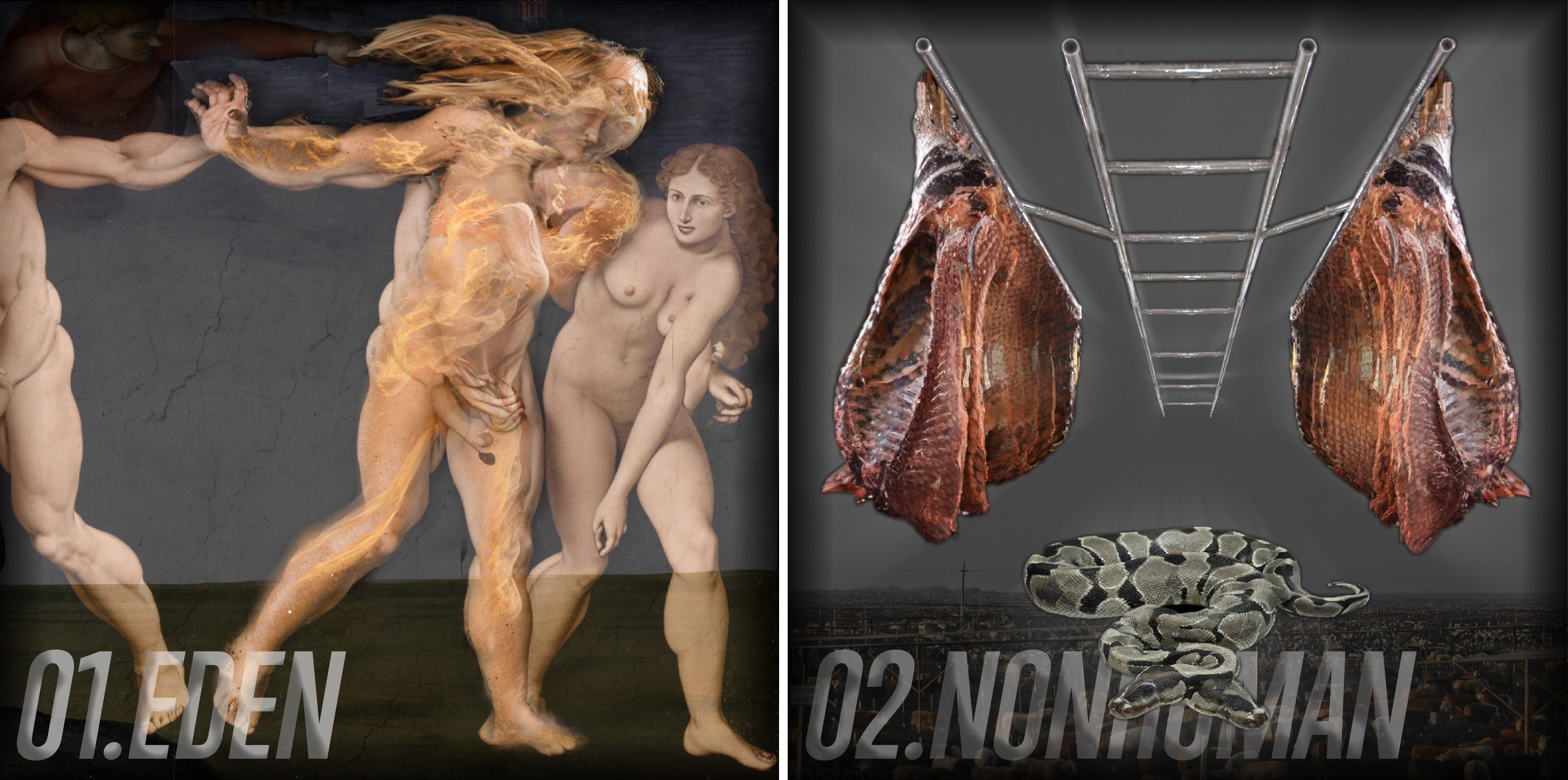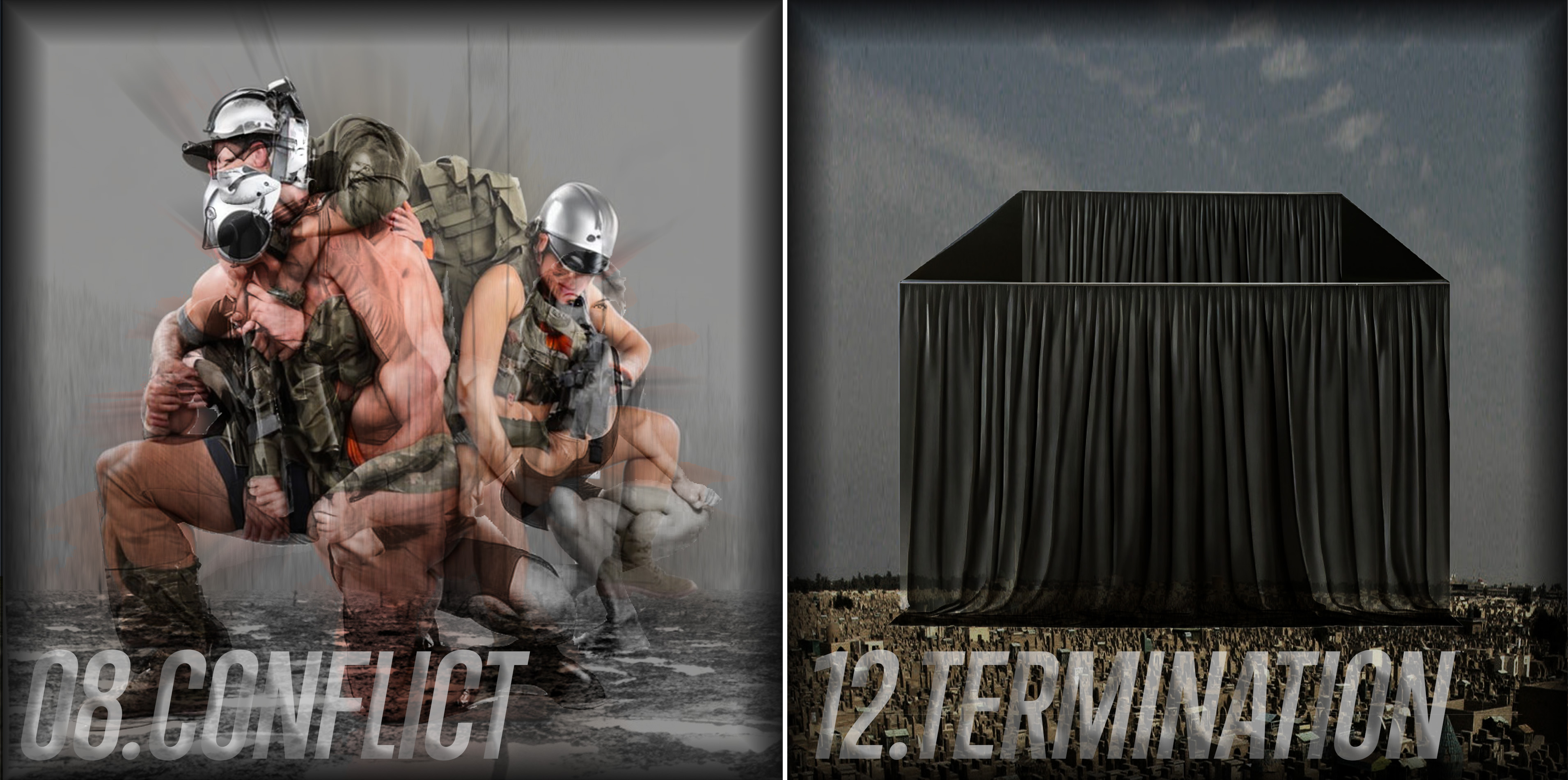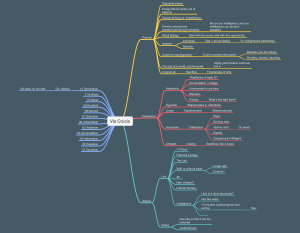VIA CRUCIS, LAUDATE DEUM essay based on Pope Francis 04/10/2023 exhortation
The origin of life on Earth is a mystery. It may be found in the divine, it may be found in the primordial soup of early oceans and, it may be found in the vast void of space. In any case, we are under the watchful eye of the universe, but when challenged by the existential threats of climate change, rampant social inequalities and corrupt governance, the very forms of life hinge on the moral and ethical responsibility of earthly individuals and societies.
» Via Crucis-Laudate Deum-cuts PDF
The origin of life on Earth is a mystery. It may be found in the divine, it may be found in the primordial soup of early oceans and, it may be found in the vast void of outer-space. When challenged by existential threats from our planet, our corporations and our governments, the very forms of life may hinge on the moral and ethical responsibility of human societies. Via Crucis takes us through the trial of our becoming.
Judeo-Christianity has a long tradition of visual narratives progressively perceived beyond dogma to become integral to our culture and our understanding of artistique representation throughout centuries.
The Stations of the Cross has long been one of the most popular handles to religious devotion and it is central to western iconography along with religious icons.
Whether our worlds are religious or not, we still exist within a dramaturgy that interplays the advent of humanity with its sins, evils, myths, divinities, saviors, curses, punishments, redemption and transfiguration, technology often being a “deus ex machina” as AI is sometimes perceived to be.
A planetary crisis
If its original intent was to secure the soul of sinners through a spiritual pilgrimage, today’s Via Crucis relates to a humanity condemned by a long trail of sins and with no savior in sight other than itself and perhaps the hope that progress will somehow be our savior. Indeed, Judeo-christian Modernity has driven humanity toward expectations and anxieties that permeates every aspect of society including the realms of religion. As such, Christians increasingly engage in ecological activism, thus responding to the Pope Francis 2015 Laudato si call to save the planet.
But what are the links between ecology and the Church?
Christianity because of its anthropocentrism has sometimes been presented as one of those responsible for the current crisis, and some think that the role of religions is quite simply to awaken consciousness towards a better common world. If the Bible sometimes tells us to draw from nature what we desire, it also tells us to protect with gratitude the “divine creation” that we have inherited.
Via Crucis is here reinterpreted on a double track.
The Real: Originally designed for the spiritual salvation of sinners, today’s Via Crucis resonates with a humanity burdened by a long history of abuse against Nature, with no apparent savior other than itself and the prospect of a “futurist” redeemer. Judeo-Christian modernity has steered humanity towards expectations and anxieties, influencing all facets of society, including religion. Christians respond by increasingly participating in ecological activism, aligning with Pope Francis’s 2015 Laudato si and the 2023 Laudate Deum exhortations to confront societal ills and preserve the planet.
However, questions arise about the connection between ecology and the Church. Christianity, due to its anthropocentrism, has been implicated in the current crisis. Some argue that religions should play a role in awakening consciousness toward a better shared world. While the Bible encourages drawing from nature, it also emphasizes protecting the “divine creation” we have inherited.
In that sense, Via Crucis evokes a post-theologian (or theology of the real) approach to universal and timeless topics of the human presence on Earth.
The Representation: In the expansive lineage of holy representations and their techniques, creators continuously invent expressions to encapsulate their contemporary realities. The visual arts symbiotically evolve with emerging technologies. Today’s representations dynamically emerge from systems beyond our physical and conceptual grasp. Via Crucis mirrors the pictorial accumulations of our iconosphere, incorporating images that are seen and revisited, unnoticed, or transformed. These scenes encapsulate our daily dramas in a world increasingly shaped by our deeds, turning our temporality into a countdown to self-termination.
FORM
In its association with the traditional 14 Stations of the Cross illustrating Christ’s journey to crucifixion, Via Crucis is organized around 12 scenes, each addressing contemporary themes representing humanity’s misuse of power. The cycle of 12 scenes, or “stages” functions as a series of images and texts but is intended to also frame the project in a temporal structure. It suggests both condemnation leading to regeneration and the prospect of new beginnings spiraling into damnation, and it could be perceived as a discursive parcours more than as a spiritual pilgrimage.
Each composition juxtaposes a background of celestial perspectives, whether divine or technological, with iconic depictions of everyday allegories. Employing a mix of pictorial techniques, the artworks integrate photography and digital montage alongside generative AI imagery. The expression of the resulting video and music synthesis could be perceived as a fusion of Asian inspiration and baroque digital aesthetics.
>>> CLIPS
Black Sequence



